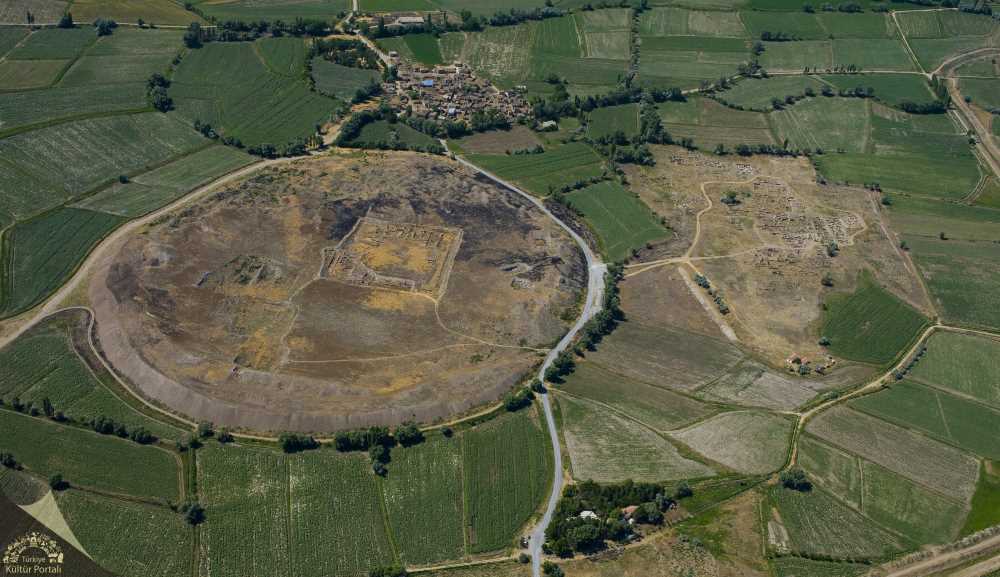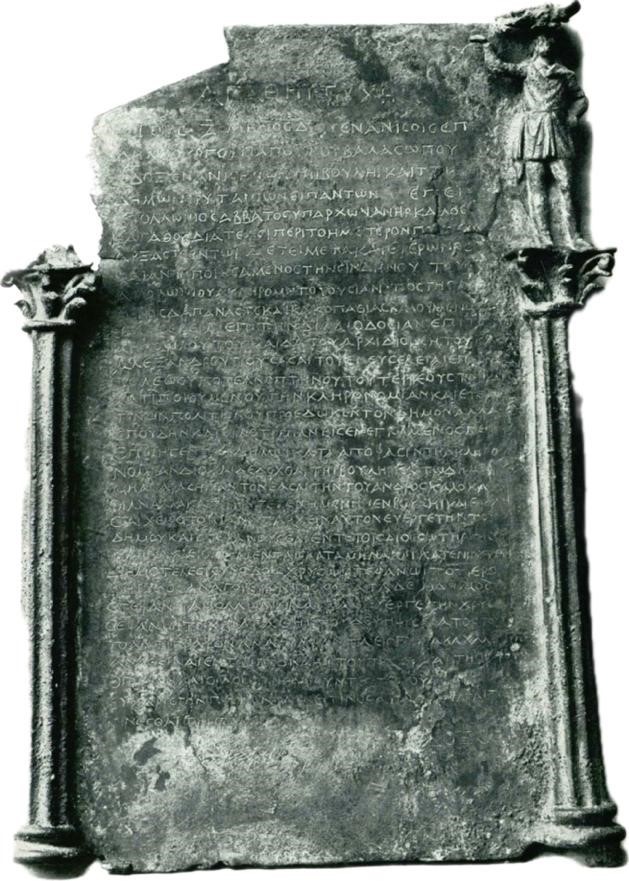
The 2000 year old Anisa Plate shows that Greek was spoken in Anatolia at that time
The Anisa Plate with a 2000-year-old parliamentary resolution found in Kültepe, the most important karum of the Assyrian trade colonies, shows that Greek was used in Anatolia at that time.
Kültepe Karum is located in the province of Kayseri in central Turkey. Kültepe/Kanesh is about 20 km from the center of Kayseri.
Kültepe Kanesh Karum is an important archaeological site known as the place where the first written tablets in Anatolia were discovered. Between 2000-1750 BC, Assyrian merchants brought writing to Anatolia through this karum.
A bronze plaque inscribed with a 2000-year-old parliamentary decision found by a person in Kültepe in 1880 mentions the name of the region as Anisa.
Prof. Dr. Fikri Kulakoğlu, Head of Kültepe Excavations, said that this important artifact is now in the Berlin Museum; “A council decision was written on this tablet. It was decided to hang this text in a temple here. This decision was taken by the city council of that period. According to this text, it is understood that there was a city in Kültepe, then called Anisa.”

Prof. Dr. Kulakoğlu said: “Kültepe is not only known for its tablets. Excavations in Kültepe revealed a settlement sequence dating back to at least 6 thousand years ago and excavations are continuing towards earlier periods. Of course, what makes Kültepe stand out is that Assyrian merchants arrived in the second millennium and established a system here and trade started. The Assyrians, who established a network starting from the southernmost part of Mesopotamia to cover the whole region, brought the materials they obtained to Anatolia and sold them for gold and silver.”
During the 75 years of excavations, Hellenistic Period structures were also discovered.
A bronze tablet referred to as the ‘Anisa Plate’ is a document that will affect the history of Anatolia.
Prof. Kulakoğlu said about the Anisa Plate: “Unfortunately, in the 19th century, this artifact and other artifacts found with it were smuggled abroad by an antique dealer in Istanbul. This bronze tablet, which we call the Anisa Plate, is today in the Berlin Museum. It is an important document that was smuggled there in the 1880s. It dates back to approximately 160-150 BC,” he said.

Prof. Dr. Kulakoğlu gave information about the characteristics of the tablet; “A parliamentary decision was written on this tablet. It was decided to hang this text in a temple here. A city council in Kayseri took this decision. According to this text, we understand that there was a city in Kanesh, Kültepe, whose name at that time was Anisa. There is a decision to honor the senior executive in this decree. In that sense, it is understood that Kültepe still had the status of a city, especially in later periods. Greek seems to have been the language of the city at that time. But on the other hand, the names mentioned in the tablet also indicate that there was a Persian culture here. Especially when we look at the names of the fathers of the people living here, we can understand that a truly multicultural society was living in this period.”
The decree on the Anisa Plate, dated between 160-150 BC, is very important as it provides information about the legal practices and social life of both Kültepe and the Cappadocia Region.
The subject of the decree, which is written in Greek, is the honoring of Apollonios, the son of Abbas, who was the ruler of Anisa, with the title of ‘benefactor’ by the city council and the people’s assembly in Anisa as a result of bringing the inheritance of a citizen who died without leaving an heir to the city.
You may also like
- A 1700-year-old statue of Pan unearthed during the excavations at Polyeuktos in İstanbul
- The granary was found in the ancient city of Sebaste, founded by the first Roman emperor Augustus
- Donalar Kale Kapı Rock Tomb or Donalar Rock Tomb
- Theater emerges as works continue in ancient city of Perinthos
- Urartian King Argishti’s bronze shield revealed the name of an unknown country
- The religious center of Lycia, the ancient city of Letoon
- Who were the Luwians?
- A new study brings a fresh perspective on the Anatolian origin of the Indo-European languages
- Perhaps the oldest thermal treatment center in the world, which has been in continuous use for 2000 years -Basilica Therma Roman Bath or King’s Daughter-
- The largest synagogue of the ancient world, located in the ancient city of Sardis, is being restored











Leave a Reply